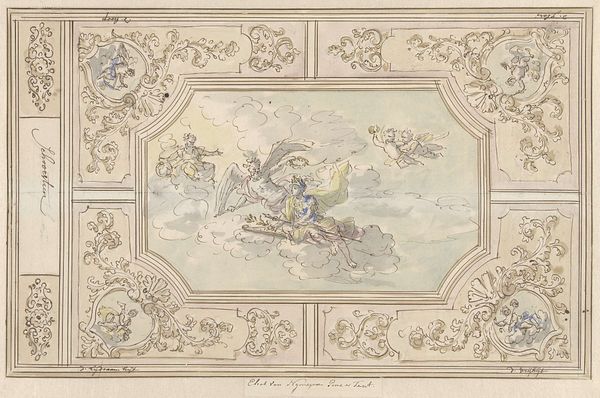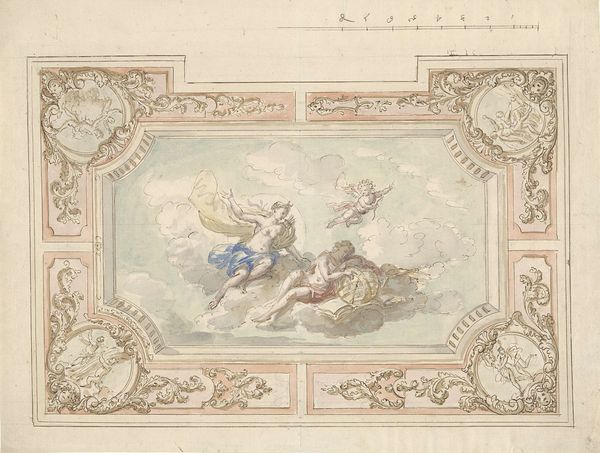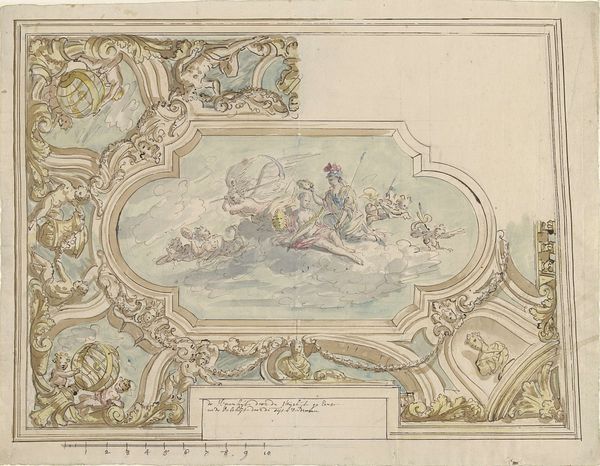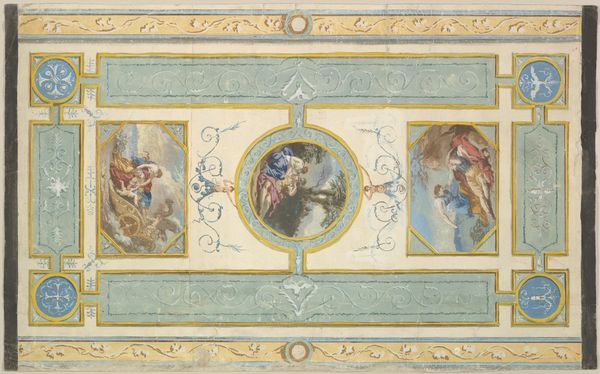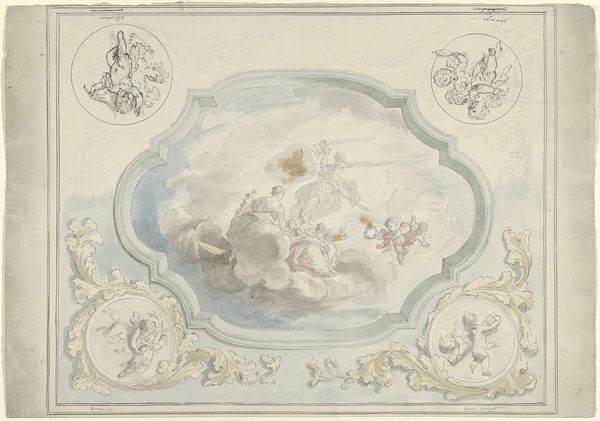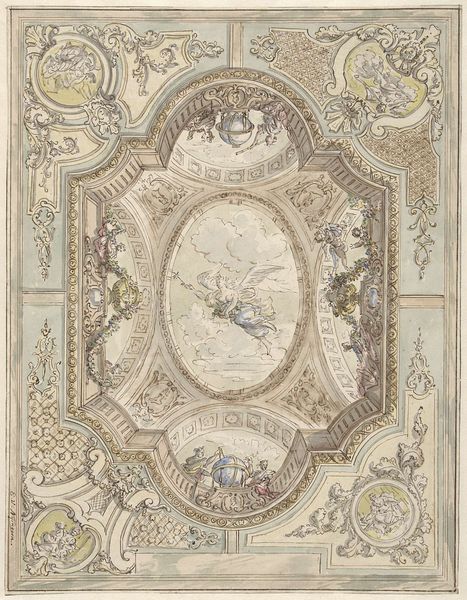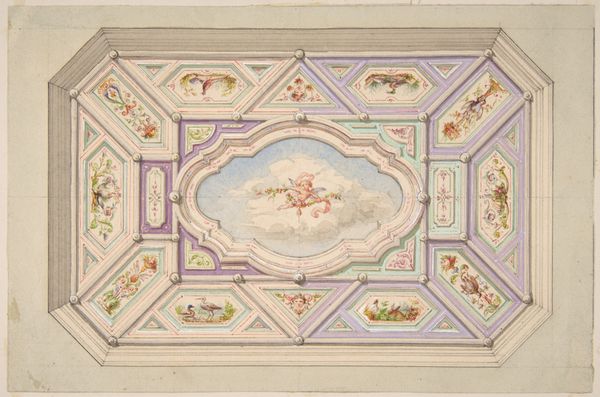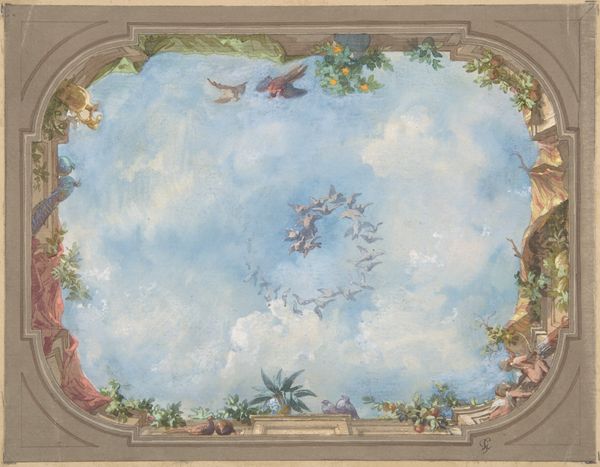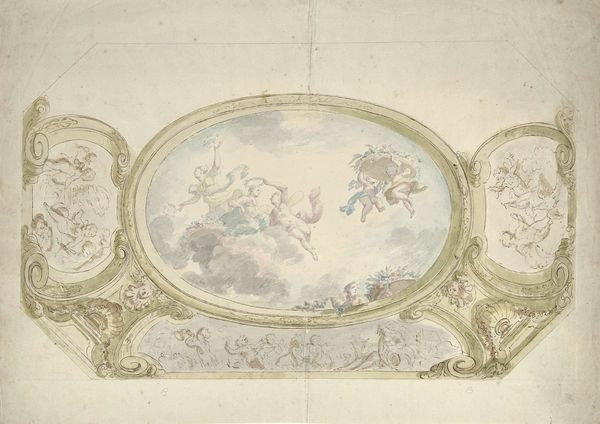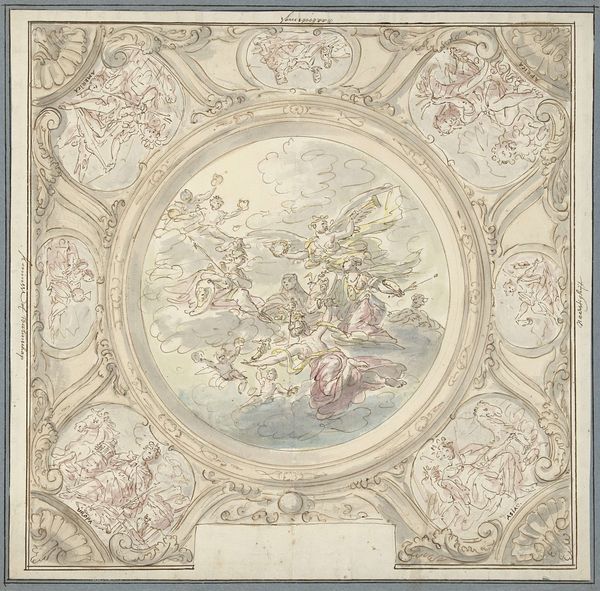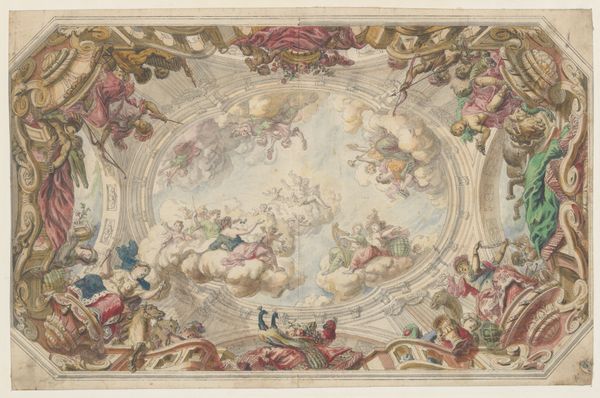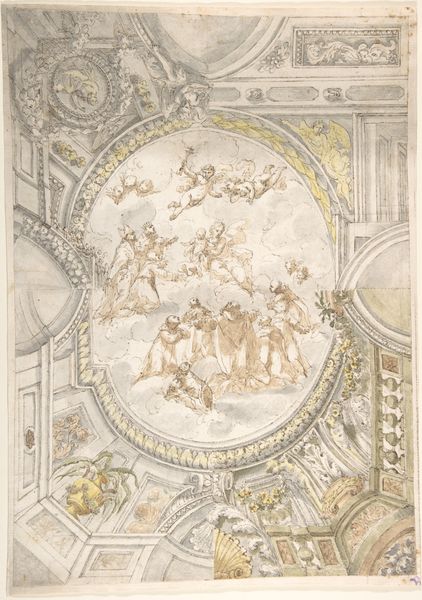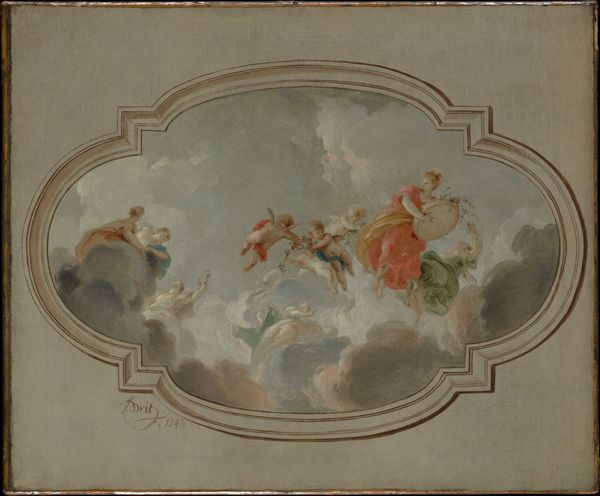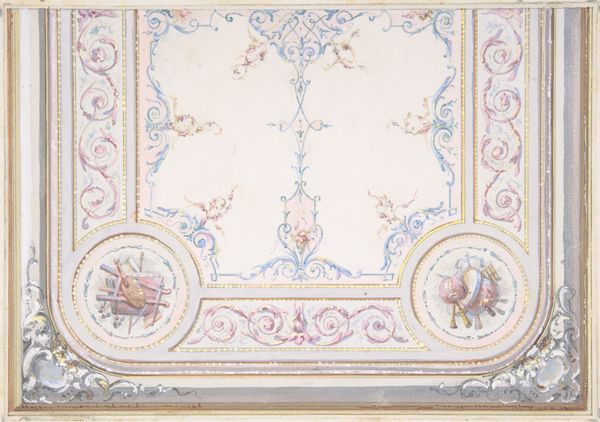
Ontwerp voor een plafondschildering met allegorie op de Waarheid en Gerechtigheid 1677 - 1755
0:00
0:00
drawing, painting, watercolor
#
drawing
#
allegory
#
muted colour palette
#
baroque
#
painting
#
traditional architecture
#
watercolor
#
watercolour illustration
#
history-painting
#
miniature
Dimensions: height 368 mm, width 471 mm
Copyright: Rijks Museum: Open Domain
Curator: Here we have a design for a ceiling painting by Elias van Nijmegen, created sometime between 1677 and 1755, titled “Ontwerp voor een plafondschildering met allegorie op de Waarheid en Gerechtigheid,” or, "Design for a ceiling painting with allegory of Truth and Justice". Editor: It's ethereal, almost dreamlike. The soft washes of watercolor give it a weightless quality, as if the figures truly float in the clouds. And the intricate border is so elaborate. I wonder what that all added up to in labour-hours! Curator: The allegory is fascinating, isn't it? You have Truth and Justice, of course, central figures often seen in Baroque art. The cherubs further enhance the sense of divine order and moral rectitude that was central to societal values back then. Editor: Values yes, but also power and money. Look at the drawing, it’s all done in watercolor. Think of the materials alone: the cost of pigments, the paper. This wasn’t cheap, which means that even in its preparatory stage this piece was always about demonstrating someone’s authority. Curator: You’re right; it would be commissioned to reinforce authority. But it's about more than just display. It also speaks to the deeper human need to believe in ideals, rendered here in these enduring images. Editor: I agree about belief, but that too served power! Still, thinking about the ceiling, how it’s meant to be viewed from below... It’s a clever use of perspective and materials to make these ideals literally look down on us. I do wonder who commissioned this particular design though. Curator: We don't know for sure who this piece was intended for, but similar paintings were often commissioned for governmental or ecclesiastical buildings, spaces where the ruling powers wanted to present themselves as upholders of truth and justice. Think about how impactful repeated exposure to such images could be. Editor: Right, the drip-feed of symbolic messaging. I also find the miniature emblems in the border compelling. It would be nice to get a sense of their symbolic value; each would be individually produced with labor from different individuals no doubt. Curator: These emblems certainly contribute to a sense of comprehensive order, an all-encompassing vision. Delving into their specific meanings would, without a doubt, add layers of understanding. Editor: Yes, all these combined efforts creating symbolic order in visual form; it certainly emphasizes the concentrated effort and cost behind making any sort of permanent cultural statement. Curator: Thinking about it that way definitely reframes my understanding of these designs. Editor: Agreed. Now that I consider the sheer labour, it's amazing how we read images, when they are deeply and deliberately wrought by individual hands.
Comments
No comments
Be the first to comment and join the conversation on the ultimate creative platform.
